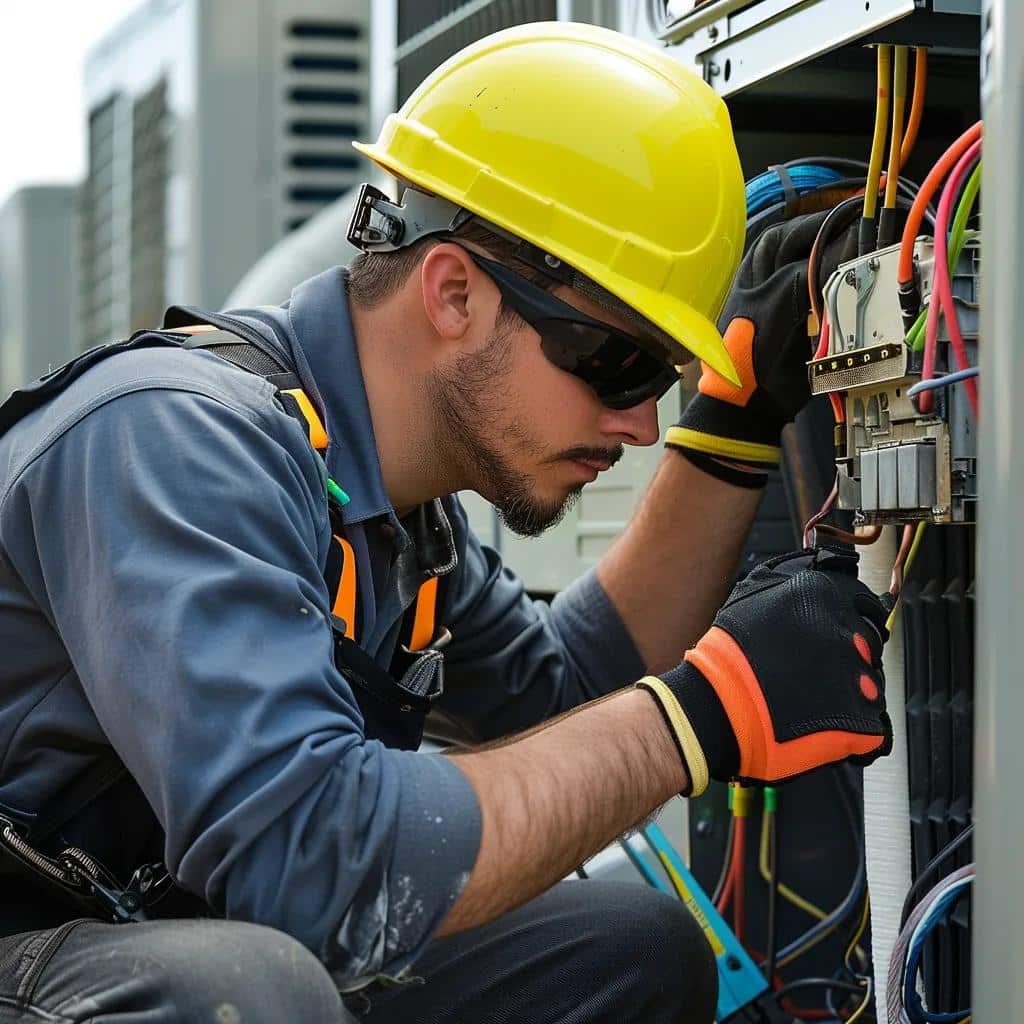
Beat the Heat: Expert Commercial HVAC Tips for End of July to August to Optimize Cooling and Reduce Repairs
Commercial HVAC systems face peak strain during late July and August heatwaves, making proactive upkeep and rapid troubleshooting essential to maintain optimal cooling and avoid costly downtime. This guide delivers actionable maintenance routines, quick troubleshooting steps, energy-saving strategies, emergency repair insights, component monitoring checklists, preventative maintenance ROI analysis, and humidity control techniques, all designed to keep your commercial AC services running smoothly when temperatures soar.
In this article, you will discover:
- Essential late-summer maintenance tasks to prevent breakdowns
- Troubleshooting common hot-weather AC problems before calling for commercial AC repairs
- Top energy-efficiency upgrades and smart HVAC technologies for cost reduction
- How emergency repairs impact budgets and ways to find reliable service quickly
- Key system components to monitor and how preventative upkeep extends equipment lifespan
- Best practices for temperature and humidity control in August
With these expert commercial HVAC tips, you can beat the heat and ensure uninterrupted comfort in your facility.
What Are the Essential Commercial HVAC Maintenance Tasks for Late Summer?
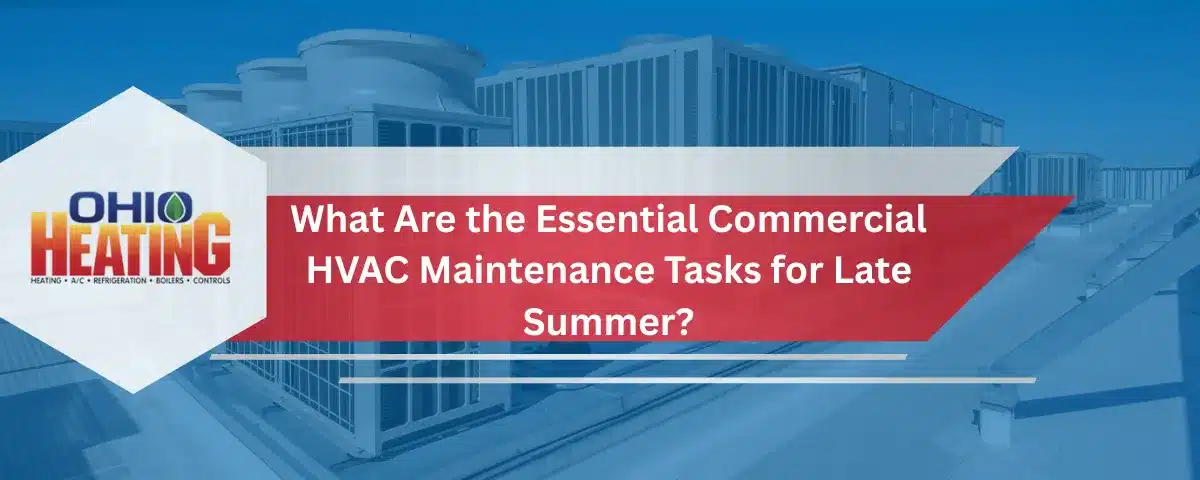
Preventative maintenance for commercial HVAC systems consists of scheduled inspections and servicing that ensure reliable cooling during extreme summer temperatures. By replacing filters, cleaning coils, checking refrigerant levels, and verifying thermostat accuracy, facility managers can maintain efficient airflow, reduce energy use, and minimize emergency commercial AC repairs. A robust maintenance regimen stabilizes system performance when demand peaks and safeguards equipment lifespan.
What Is the Complete Commercial HVAC Summer Maintenance Checklist?
A comprehensive maintenance checklist outlines all routine tasks needed to sustain peak AC performance in high-heat months.
- Replace all air filters to maintain proper airflow and prevent clogged coils.
- Clean condenser and evaporator coils to ensure efficient heat exchange.
- Inspect condensate drain lines and clear blockages to avoid water leaks.
- Test refrigerant pressures and recharge if levels fall below manufacturer specifications.
- Calibrate thermostats and verify correct temperature readings throughout zones.
- Lubricate fan motors and check belts for wear to prevent mechanical failures.
- Assess ductwork for leaks or damage and seal as needed.
- Verify electrical connections and tighten loose wiring to reduce fire risk.
Maintaining this checklist every month in late summer reduces system strain and prepares your commercial HVAC service agreement for peak cooling demands.
How Often Should Commercial AC Filters Be Changed in High-Heat Months?
Commercial AC filters should be changed at least every 30 days during July and August to maintain optimal indoor air quality and system efficiency.
- High-traffic facilities with heavy dust or pollutants may require bi-weekly filter changes.
- Fine-mesh or HEPA filters benefit from monthly replacement to prevent pressure drop.
- Regular filter swaps reduce fan energy usage by up to 15 percent.
Consistent filter maintenance directly supports airflow, lowering the risk of coil icing and early compressor failure when temperatures peak.
Energy Savings from Filter Replacement
Replacing air filters regularly can significantly improve energy efficiency in commercial HVAC services. Studies show that consistent filter maintenance can reduce fan energy usage by up to 15 percent, directly supporting airflow and lowering the risk of compressor failure.
This research supports the article’s emphasis on the importance of filter maintenance for optimal HVAC performance.
Why Is Coil Cleaning Critical for Commercial AC Efficiency in August?
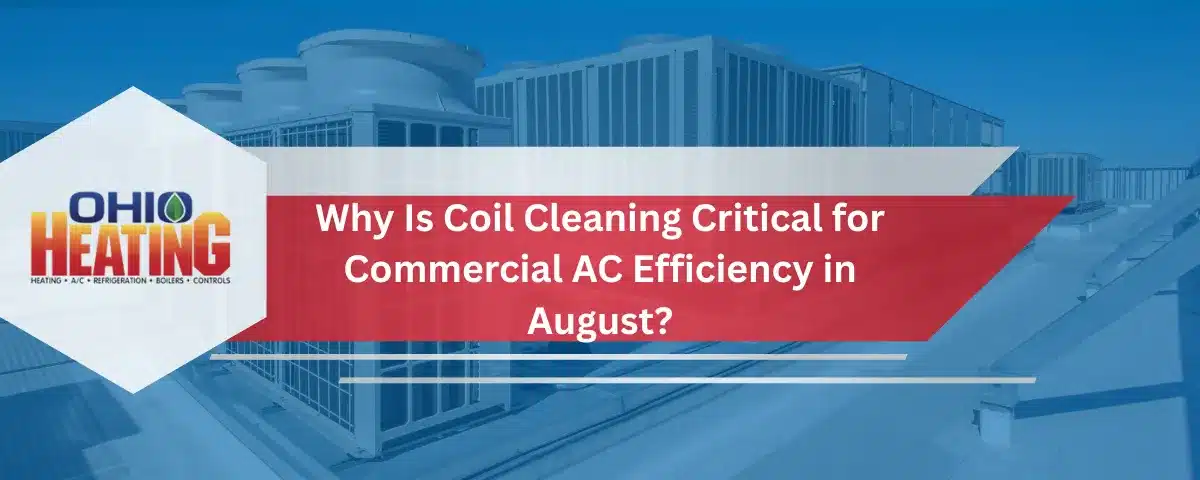
Cleaning condenser and evaporator coils removes dirt and debris that insulate coil surfaces, restricting heat transfer and forcing compressors to work harder.
| Entity | Attribute | Value |
|---|---|---|
| Condenser coils | Heat rejection | 10–20 percent efficiency gain |
| Evaporator coils | Refrigerant evaporation | Improved cooling capacity |
| Coil maintenance | Energy consumption | Reduced by up to 12 percent |
Regular coil cleaning restores optimal thermal exchange, lowers operating costs, and prevents compressor overload during critical summer periods.
How Do Refrigerant Levels Affect Commercial AC Performance During Heatwaves?
Proper refrigerant charge enables maximum heat absorption in evaporator coils and effective rejection in condensers, maintaining set temperature zones.
- Undercharged systems produce warm air, increase compressor run-time, and risk motor burnout.
- Overcharged units flood the evaporator, causing liquid refrigerant slugging and potential coil damage.
- Accurate refrigerant levels optimize energy use and maintain consistent comfort throughout peak heat events.
Systematic refrigerant checks should be part of any comprehensive commercial HVAC preventative maintenance plan.
How Can You Troubleshoot Common Commercial AC Problems in Hot Weather?

Troubleshooting commercial AC in high temperatures involves identifying warning signs, performing quick corrective steps, and deciding when to engage emergency
professionals. A systematic approach minimizes downtime and supports facility comfort without unnecessary service calls.
What Are the Signs Your Commercial AC Unit Is Malfunctioning in Summer?
Malfunctions often manifest as:
- Warm discharge air instead of cool airflow.
- Unusual noises such as squealing belts, rattling panels, or hissing refrigerant leaks.
- Water pooling under units from blocked condensate lines.
- Frequent cycling or short-cycling due to low refrigerant or thermostat issues.
Early detection of these symptoms lets facility managers address minor issues before they escalate into costly breakdowns.
What Quick Fixes Can You Perform Before Calling Commercial AC Repair Services?
Before scheduling commercial AC services, try these steps:
- Replace or clean air filters to restore proper airflow.
- Reset circuit breakers and inspect disconnect switches.
- Clear debris around condenser units to improve ventilation.
- Flush condensate drains with a mild cleaning solution to prevent water backup.
- Check thermostat programming and recalibrate setpoints if necessary.
Implementing these fixes often resolves simple issues and reduces unnecessary service calls during peak demand.
When Should You Contact Emergency Commercial HVAC Repair Professionals?
Contact emergency repair when you observe:
- Smoke or burning odors indicating electrical faults.
- Complete loss of cooling in occupied zones.
- Refrigerant leaks that pose safety hazards.
- Compressor failures indicated by constant high amperage draw.
- Water discharge causing property damage risks.
Timely engagement of qualified emergency commercial AC repair technicians protects building assets and occupant comfort.
What Are the Best Energy Efficiency Strategies for Commercial HVAC Systems in Summer?
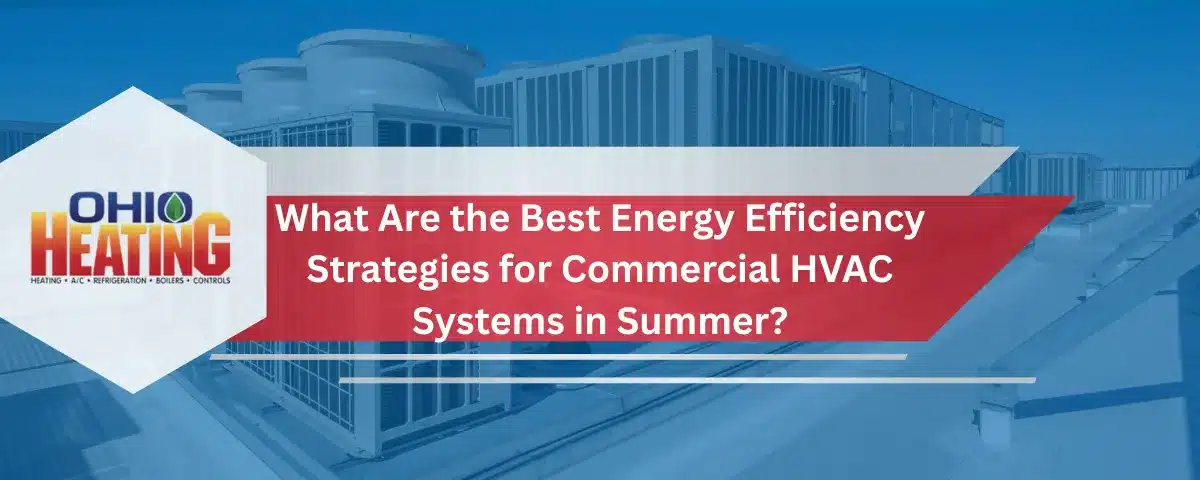
Energy efficiency strategies for commercial HVAC combine equipment optimization, building envelope improvements, and advanced control technologies to reduce consumption and operational costs during high-demand months.
How Can Smart Thermostats and Building Management Systems Optimize Cooling?
Smart thermostats and building management systems (BMS) use real-time data from temperature, humidity, and occupancy sensors to adjust cooling setpoints, sequence equipment start-ups, and implement demand-response protocols.
- Adaptive scheduling reduces runtime during unoccupied periods.
- Zone control prevents overcooling and balances comfort across spaces.
- Remote monitoring enables proactive alerts for abnormal performance.
Integrating smart controls can lower cooling energy by 10–20 percent while enhancing occupant comfort.
Benefits of Smart Thermostats
Smart thermostats and building management systems (BMS) can optimize cooling by using real-time data to adjust cooling setpoints and implement demand-response protocols. Integrating smart controls can lower cooling energy by 10–20 percent while enhancing occupant comfort.
This citation reinforces the article’s recommendations for energy-efficient strategies in commercial HVAC systems.
What Are Effective Ways to Seal Ductwork and Improve Insulation for Energy Savings?
Proper duct sealing and insulation prevent conditioned air losses that increase load on HVAC systems.
| Entity | Attribute | Value |
|---|---|---|
| Duct sealing | Leakage reduction | Up to 30 percent airflow gain |
| Insulation type | R-value | R-6 to R-8 for commercial ducts |
| Materials | Mastic, metal tape | Permanent airtight seal |
Sealing joints, repairing holes, and adding insulation maintains temperature integrity and reduces cooling energy waste.
Which Energy-Efficient Upgrades Provide the Best ROI for Commercial Buildings?
Key upgrades that deliver rapid payback include:
- High-SEER rooftop units, improving seasonal efficiency by 15–30 percent.
- Variable frequency drives (VFDs) on fans and pumps to match load requirements.
- Economizers and free-cooling systems that leverage outside air for heat rejection.
Prioritizing these improvements can yield ROI within 2–4 years while reducing maintenance and repair frequency.
How Do Emergency Commercial AC Repairs Impact Costs and Downtime in Peak Heat?
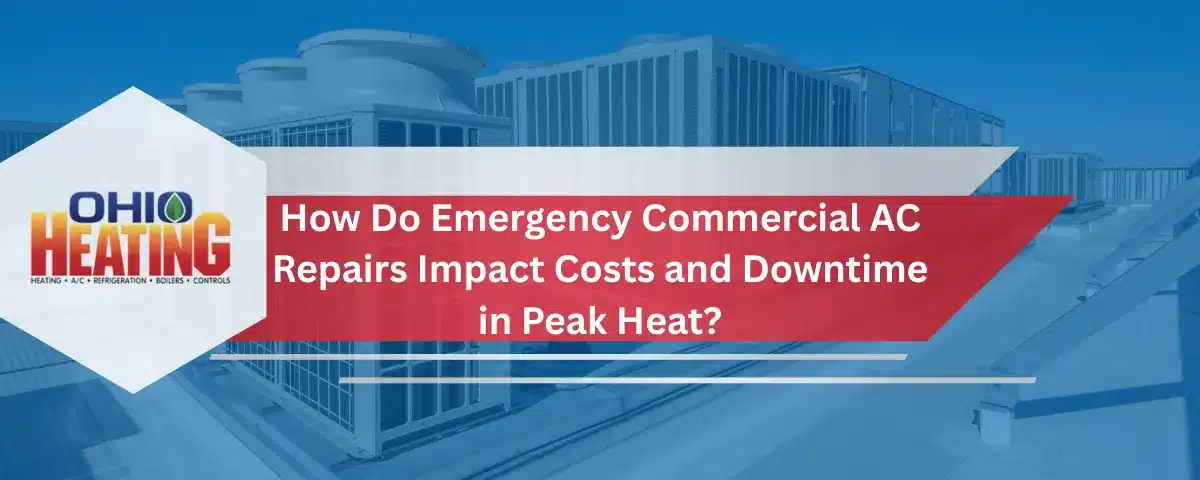
Unplanned commercial AC repairs during August heatwaves often incur premium labor rates, expedited parts shipping, and accelerated service charges—directly affecting budgets and business continuity.
What Factors Influence Commercial AC Repair Costs in Late Summer?
Several variables drive emergency repair expenses:
| Factor | Attribute | Cost Impact |
|---|---|---|
| After-hours service | Labor premium | +25–50 percent on standard hourly rate |
| Part availability | Lead time | Rush shipping fees |
| System complexity | Component access | Additional diagnostic hours |
| Contractor demand | Local service capacity | Surge pricing during heatwaves |
Understanding these drivers helps facility managers plan maintenance agreements that mitigate peak-season surcharges.
How Can You Find Reliable Emergency Commercial HVAC Services Quickly?
To secure trustworthy emergency service:
- Maintain pre-qualified contractor lists with verified credentials.
- Establish service-level agreements that guarantee 24/7 response times.
- Use digital platforms offering real-time technician tracking.
- Check references and online reviews for performance history.
Building these relationships before emergencies ensures rapid, cost-effective commercial HVAC repairs when heatwaves strike.
What Are the Key Components of Commercial HVAC Systems to Monitor During Summer?
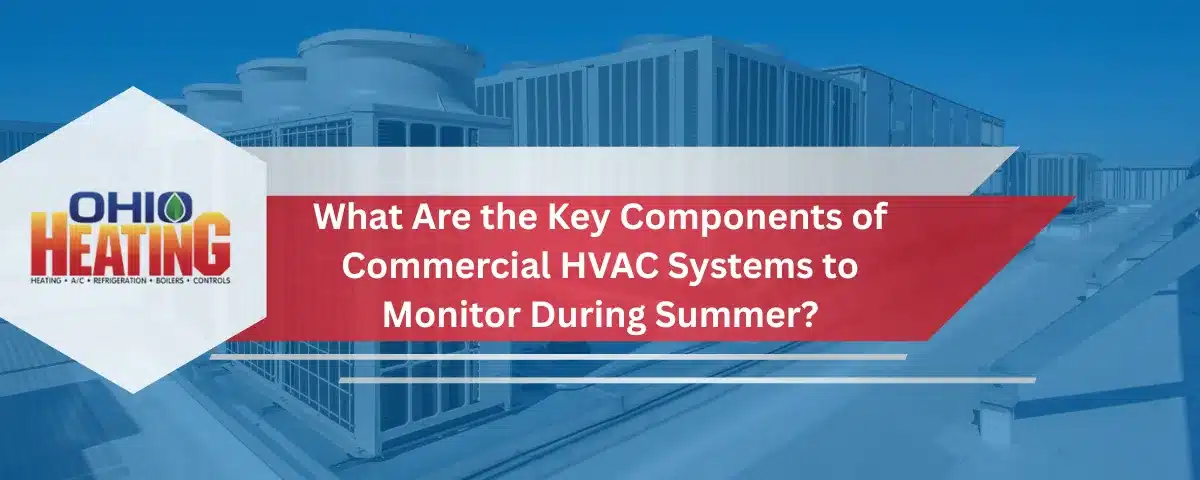
Monitoring critical components, compressors, condensers, evaporators, refrigerant circuits, and ductwork, enables predictive maintenance and prevents severe malfunctions in high-stress months.
How Do Compressors, Condensers, and Evaporators Work Together in Cooling?
| Component | Function | Importance |
|---|---|---|
| Compressor | Increases refrigerant pressure and temperature | Drives heat transfer cycle |
| Condenser | Releases absorbed heat to outdoor air | Ensures refrigerant condenses to liquid |
| Evaporator | Absorbs indoor heat through refrigerant expansion | Provides cooled supply air |
Their synchronized operation sustains the cooling loop; disruptions in any stage reduce overall system efficiency and capacity.
Why Is Detecting Refrigerant Leaks Critical for Maintaining Cooling Efficiency?
Refrigerant leaks lower system charge, diminishing heat absorption and forcing compressors to run longer. Detecting leaks early:
- Preserves manufacturer-specified refrigeration levels.
- Prevents moisture ingress that corrodes coils and valves.
- Reduces environmental impact and regulatory liabilities.
Regular refrigerant audits ensure the cooling cycle remains uninterrupted and energy-efficient.
How Does Regular Ductwork Inspection Prevent Summer HVAC Failures?
Inspecting ductwork uncovers leaks, blockages, and insulation gaps that compromise airflow and load distribution. Key actions include:
- Checking joints and seams for air infiltration.
- Cleaning interior surfaces to remove dust buildup.
- Verifying insulation integrity in unconditioned spaces.
Proactive duct inspection maintains design airflow rates and reduces strain on blowers and compressors.
How Does Preventative Maintenance Save Money and Extend Commercial HVAC Lifespan?
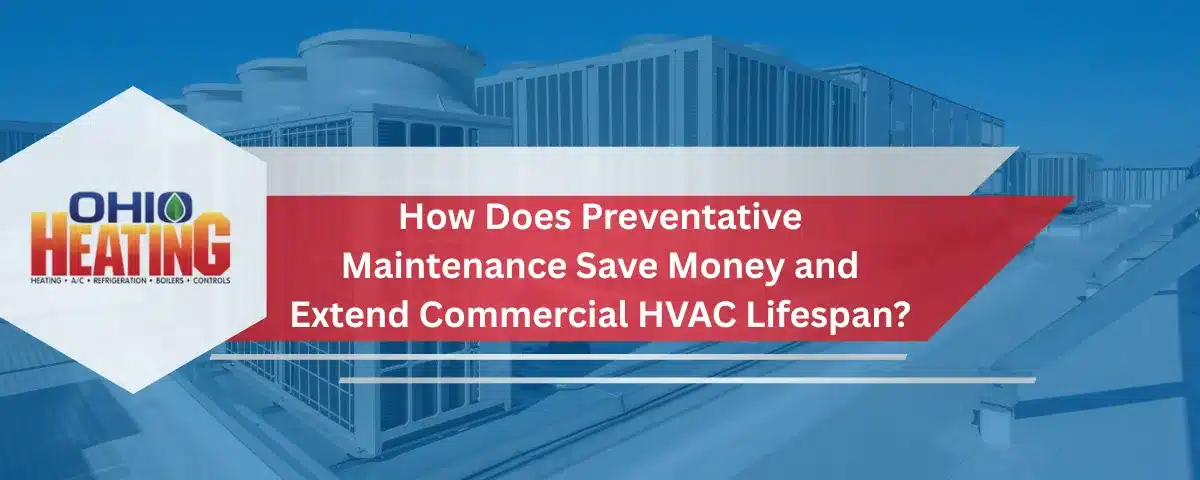
Preventative maintenance for commercial HVAC systems comprises scheduled servicing that preserves component health, reduces unscheduled breakdowns, and maximizes return on investment over a system’s lifecycle.
What Are the Energy Savings Achieved Through Regular Commercial HVAC Maintenance?
| Maintenance Action | Energy Reduction | ROI Timeline |
|---|---|---|
| Filter replacement | 5–10 percent gain | 1–2 months |
| Coil cleaning | 8–12 percent gain | 2–3 months |
| Refrigerant charge checks | 4–6 percent gain | 3–4 months |
Consistent upkeep delivers cumulative energy savings that quickly offset maintenance expenses and lower operating costs.
How Much Can Equipment Lifespan Increase With Seasonal Maintenance?
Regular seasonal maintenance can extend commercial HVAC equipment lifespan by 20–40 percent through:
- Reduced wear on moving parts thanks to proper lubrication.
- Fewer compressor starts and stops from balanced refrigerant charge.
- Prevention of coil corrosion and motor overheating.
Extending service life delays capital replacement and enhances overall return on investment.
What Are the Top Tips for Commercial Building Cooling and Humidity Control in August?
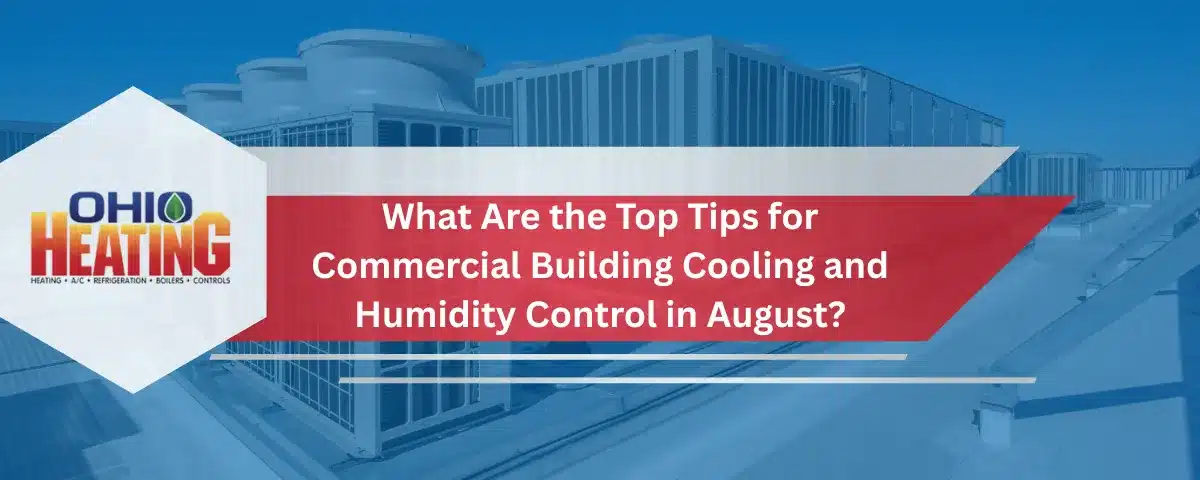
Effective cooling strategies paired with humidity management maintain occupant comfort and indoor air quality when outdoor humidity spikes alongside temperature.
How Can HVAC Systems Help Manage Humidity During Hot, Humid Summer Days?
Commercial HVAC systems control humidity by:
- Maintaining proper coil temperatures to condense moisture efficiently.
- Utilizing variable-speed fans to adjust airflow and improve dehumidification.
- Integrating standalone dehumidifiers in high-moisture zones.
- Employing energy-recovery ventilators to exchange humid outdoor air with conditioned indoor air.
These methods ensure balanced humidity levels and prevent mold or microbial growth.
What Are Best Practices for Thermostat Settings to Maximize Comfort and Efficiency?
Optimal thermostat strategies include:
- Setting cooling setpoints between 74°F and 78°F during occupied hours.
- Implementing 3–5°F setbacks during unoccupied periods.
- Using programmable or smart thermostats to enforce schedules.
- Enabling humidity control features if available.
Adhering to these settings reduces energy consumption without sacrificing occupant comfort.
When seasonal maintenance, strategic troubleshooting, energy-efficiency upgrades, and humidity controls are applied in concert, your commercial HVAC system will deliver reliable cooling, lower operating costs, and extended equipment lifespan, truly allowing you to beat the heat this August and beyond. Schedule your comprehensive
now to ensure peak performance throughout the hottest months.
Frequently Asked Questions
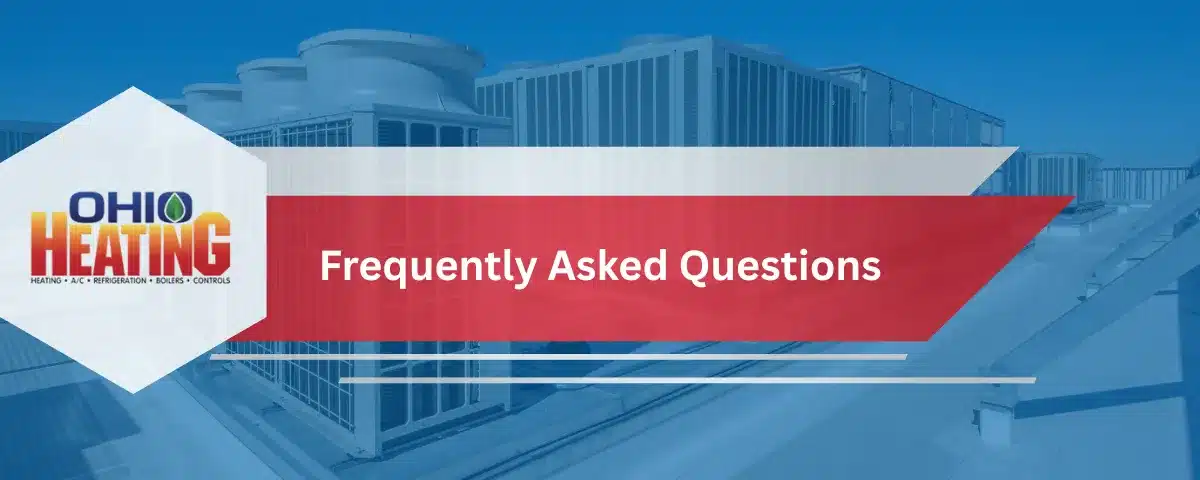
What are the benefits of regular HVAC system monitoring during summer?
Regular monitoring of HVAC systems during summer helps identify potential issues before they escalate into costly repairs. By keeping an eye on key components like compressors, condensers, and refrigerant levels, facility managers can ensure optimal performance and energy efficiency. This proactive approach not only extends the lifespan of the equipment but also enhances indoor air quality and comfort for occupants. Additionally, timely interventions can prevent system failures during peak heat, reducing downtime and maintaining business operations smoothly.
How can building design impact HVAC efficiency in hot weather?
The design of a building significantly influences HVAC efficiency, especially during hot weather. Factors such as insulation quality, window placement, and shading can affect how much heat enters a building. Well-insulated buildings with strategically placed windows and shading devices can reduce the cooling load on HVAC systems, leading to lower energy consumption. Additionally, incorporating energy-efficient materials and designs can enhance overall comfort and reduce reliance on air conditioning, ultimately leading to cost savings and improved environmental sustainability.
What role do humidity levels play in HVAC performance?
Humidity levels are crucial for HVAC performance, as high humidity can make indoor spaces feel warmer and uncomfortable, prompting increased cooling efforts. HVAC systems must effectively manage humidity to maintain comfort and prevent issues like mold growth. Properly functioning systems can dehumidify air while cooling it, ensuring a balanced indoor environment. Monitoring humidity levels and adjusting HVAC settings accordingly can enhance energy efficiency and occupant comfort, making it essential for effective summer HVAC management.
What are the signs that a commercial HVAC system needs an upgrade?
Signs that a commercial
system may need an upgrade include frequent breakdowns, rising energy bills, inconsistent temperatures, and excessive noise. If the system struggles to maintain desired comfort levels or requires constant repairs, it may be time to consider a replacement. Additionally, outdated systems may lack energy-efficient features, leading to higher operational costs. Upgrading to modern, energy-efficient HVAC solutions can improve performance, reduce energy consumption, and enhance overall comfort in commercial spaces.
How can energy audits improve HVAC efficiency?
Energy audits are essential for identifying inefficiencies within HVAC systems and overall building performance. By assessing energy consumption patterns, an audit can pinpoint areas where energy is wasted, such as leaks in ductwork or outdated equipment. Implementing recommendations from an energy audit can lead to significant improvements in HVAC efficiency, reducing operational costs and enhancing comfort. Regular audits also help ensure compliance with energy regulations and can provide insights into potential upgrades or maintenance needs.
What is the impact of outdoor temperature on HVAC system performance?
Outdoor temperature significantly affects HVAC system performance, particularly during extreme heat. High outdoor temperatures can increase the cooling load on systems, leading to higher energy consumption and potential strain on equipment. Systems may struggle to maintain desired indoor temperatures, resulting in discomfort for occupants. Additionally, prolonged exposure to high temperatures can accelerate wear and tear on components, increasing the likelihood of breakdowns. Regular maintenance and monitoring can help mitigate these effects and ensure efficient operation during hot weather.
How can facility managers prepare for unexpected HVAC failures during peak heat?
Facility managers can prepare for unexpected HVAC failures during peak heat by establishing a comprehensive maintenance plan that includes regular inspections and servicing. Keeping a list of reliable emergency service providers and ensuring that staff are trained to perform basic troubleshooting can also help. Additionally, investing in backup cooling solutions, such as portable air conditioning units, can provide temporary relief during system failures. Proactive planning and quick response strategies are essential for minimizing downtime and maintaining occupant comfort during heatwaves.
Conclusion
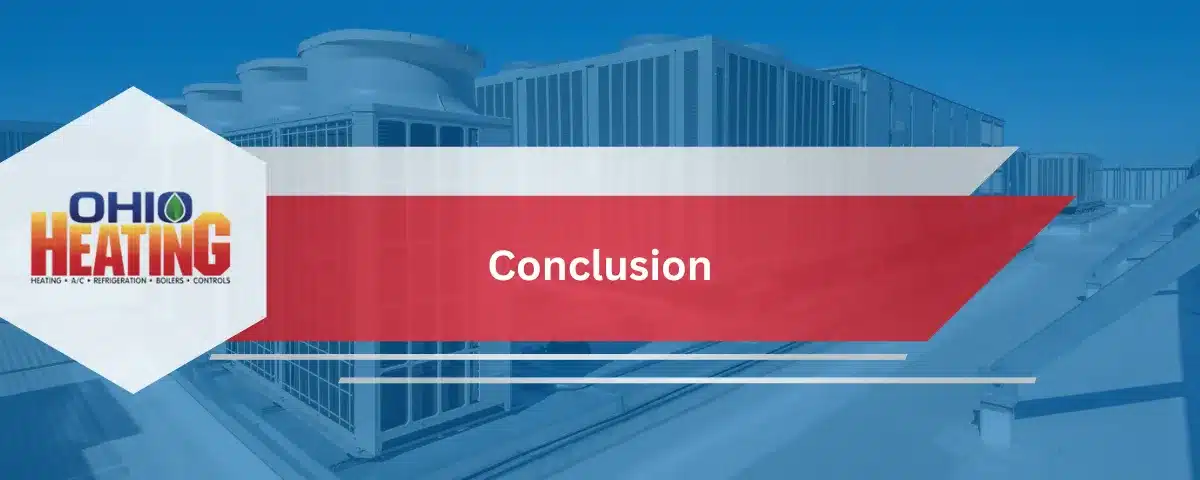
Implementing seasonal maintenance, effective troubleshooting, energy-efficient upgrades, and humidity control strategies ensures your commercial HVAC system operates at peak performance during the hottest months. These practices not only enhance cooling reliability but also significantly reduce operating costs and extend equipment lifespan. To maintain optimal comfort and efficiency, consider scheduling your comprehensive commercial AC services today. Take the proactive step towards a cooler, more efficient facility this August and beyond.
